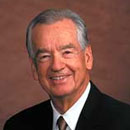Henry Payne: Big screens, stick shifts and hands-free driving: The best auto features of 2024
Published in Business News
Gizmos, whirligigs, whatsits. Engineers solve problems with new gadgets, and automobiles are rolling toy chests.
Cars, trucks and SUVs have long played a game of one-upmanship with multi-cylinder engines and multifunction seats. Now, in the electronics age, they also impress with big screens and apps. Here are my favorite features of the past year.
Hoodless screens: Steve Jobs wowed with the iPad’s intro in 2010, and now hoodless tablet screens are common in autos. There are twin tablets like the instrument and dash displays in the VW ID.Buzz. Or curved screens found in Cadillacs like the Lyriq. Even an affordable sedan like the Kia K4 features a hoodless 29-inch display stretching across the dash.
Lincoln jumbotron: Tesla changed the game with its big 17-inch Model S center screen a decade ago, and now Lincoln is first to market with a 48-inch jumbotron that stretches from A-pillar to A-pillar.
Hands-free driving: Tesla has also inspired self-driving cars, and 2024 was the year drive assist became available to the masses. Mainstream, three-row family vehicles like the Chevy Traverse (GM’s Super Cruise) and Ford’s Explorer (Blue Cruise) are now available to be driven hands-free for miles on divided highways. If mom and dad are hands-free in the family bus, the autonomous future doesn’t seem so sci-fi anymore.
Waymo app: Coming soon to a city near you. Download the Waymo app to your phone in Phoenix, San Francisco and Los Angeles and you can hail a rideshare vehicle just as you would with Uber and Lyft apps. Except the car that arrives is an autonomous Jaguar I-Pace with no driver behind the wheel. The app expands its reach to Austin, Miami and Atlanta in 2025.
NACS adapter: Tesla’s comprehensive Supercharger network is the nation’s most reliable, and non-Tesla electric vehicles began getting access in ‘24. There’s one little detail you need to use it: a charge port adapter. In order to mate their bigger, so-called CCS charge ports to Tesla’s smaller, NACS-style plug, non-Tesla EV owners have to purchase the adapter from a manufacturer or third party. Cost? About $200.
EV engine sounds: Call it ICE withdrawal. To attract buyers to EVs, some automakers are giving battery-powered, performance cars internal combustion engine-like sounds. The Hyundai Ioniq 5 N offers an IGNITION mode that mimics the sound of a turbo-4 engine, including the ability to shift through multiple gears (with rev matching) like a gas car. The Dodge Charger Daytona EV, meanwhile, hangs its “Fratzonic Chambered Exhaust” out back to mimic sounds of a Hemi V-8 engine. Vroom.
All-terrain tires: Off-road rubber was once the fetish of hardcore off-roaders in Jeep Rubicons. No more. Spurred by America’s obsession with SUVs and overlanding, most mainstream SUVs now come with off-road packages that include lifted suspension and knobby tires. Family rides joining the club are the Subaru Wilderness models, Ford Explorer Timberline, Ford Bronco Sport, Chevy Traverse Z71, Honda Pilot Trailsport and so on. As an added bonus, they make Detroit’s oxcart roads more bearable, too.
Mid-headlights: The 2014 Jeep Cherokee was one of the first mainstream vehicles to experiment with a mid-fascia headlight, and now the design element is trendy. As headlights have shrunk in size, designers have more flexibility on where to place them. Look closely and that upper light may be a wide, horizontal LED design element where headlights traditionally resided. Interestingly, Jeep canned the idea, but brands like Chevrolet and Hyundai use the mid-light extensively on SUV models. Even the Hyundai Sonata sedan features a mid-headlight.
Midgate: Forget tailgates — the midgate is back. The Chevy Avalanche brought the midgate to market in 2002 — extending the pickup’s bed space into the rear seats. The GMC Sierra and Chevy Silverado EVs have brought the concept back, extending the 6-foot bed to 9 feet with the tailgate up (almost 11 feet with tailgate down).
Custom displays: Auto infotainment screens have become connected to the cloud like our phones. That means apps for games, music and so on can be downloaded to our cars. It also means we can customize the look of our screens. Kia, the official auto partner of the NBA, offers custom screens depending on your favorite team.
Google Built-in: Speaking of smartphones, many automakers are ditching their internal infotainment systems to adopt the Google Built-in OS. The system echoes that of an Android phone, and Honda and GM products are among the first to adopt it. Scan Google Built-in’s QR code with your smartphone and the car will sync with your Google content in the cloud.
Dodge Charger STLA Large platform: Building separate EV and ICE platforms can be expensive for carmakers, especially when they’re uncertain of EV demand. So Dodge is putting both its ICE and EV models on one platform, the STLA Large chassis. They can choose battery or engine powertrains, depending on market need.
Manual shifter: The ol’ stick shift has been reborn as a premium feature. Manual boxes used to be the standard-model offering but have slowly disappeared as automatic transmissions proved more efficient and easier to operate. Now sticks are back as a performance trim for enthusiasts in models like the Mazda3 Premium, Honda Civic Si, Acura Integra A-Spec and Porsche 911T.
Moving console: There’s nothing quite like the ID.Buzz in the market: VW’s reimagining of its 1960s microbus as an EV for the 21 st century. It most closely resembles Chrysler’s innovative Pacifica minivan with a creative interior, including auto-open sliding doors and removable seats. New is a movable center console that can be uprooted from the front of the car and moved to the second row if preferred.
____
©2024 www.detroitnews.com. Visit at detroitnews.com. Distributed by Tribune Content Agency, LLC.



















Comments